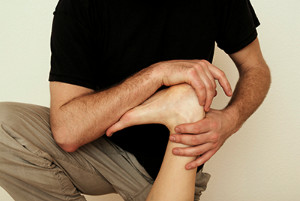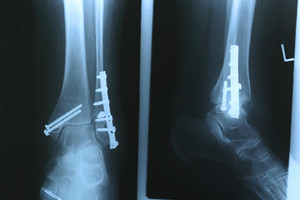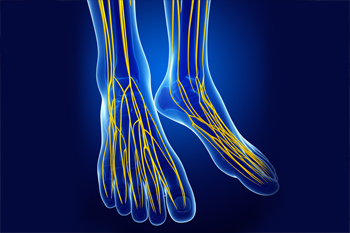Items filtered by date: March 2023
Tips for Starting to Walk as Exercise

Walking is one of the most popular forms of exercise, mainly because it’s easy to do, costs relatively little money, and has a positive effect on general health. Another reason for its popularity is the low-impact nature of walking. It puts far less pressure on the joints, and the risk of injury is low. Walking is also believed to improve circulation, help control blood pressure, and release stress. To get started on walking as an exercise, experts suggest finding the proper footwear. This not only increases the benefits of walking, it also helps to prevent foot problems. Make sure the shoes are designed for walking and not running or another activity. Be aware of proper cushioning and arch support, both of which can help to ward off plantar fasciitis. It is beneficial to start out walking easy and work your way up to a total of about 150 minutes a week. Also, warming up before your walk and cooling down with stretches afterward are important ways to prevent injury. For more information about getting started with walking for exercise, it is suggested that you consult a podiatrist.
Exercising your feet regularly with the proper foot wear is a great way to prevent injuries and build strength. If you have any concerns about your feet, contact Nrup Tolat, DPM from Atlanta Total Foot & Ankle Care. Our doctor can provide the care you need to keep you pain-free and on your feet.
Exercise for Your Feet
Exercise for your feet can help you gain strength, mobility and flexibility in your feet. They say that strengthening your feet can be just as rewarding as strengthening another part of the body. Your feet are very important, and we often forget about them in our daily tasks. But it is because of our feet that are we able to get going and do what we need to. For those of us fortunate enough to not have any foot problems, it is an important gesture to take care of them to ensure good health in the long run.
Some foot health exercises can include ankle pumps, tip-toeing, toe rises, lifting off the floor doing reps and sets, and flexing the toes. It is best to speak with Our doctor to determine an appropriate regimen for your needs. Everyone’s needs and bodies are different, and the activities required to maintain strength in the feet vary from individual to individual.
Once you get into a routine of doing regular exercise, you may notice a difference in your feet and how strong they may become.
If you have any questions please feel free to contact our offices located in Woodstock and Atlanta, GA . We offer the newest diagnostic and treatment technologies for all your foot and ankle needs.
Arthritis Can Cause Pain in the Feet and Ankles
Plantar Fasciitis Stretches

Stretching the feet can provide physical as well as mental health benefits. These can include coping with pain management, achieving inner peace, and managing stress levels. It is beneficial to perform foot stretches with existing foot pain. The condition that is known as plantar fasciitis may be helped when the heel is held in one hand while grasping the toes with the other. A gentle stretch can be felt in the sole of the foot where the plantar fascia is located as the toes and heel are pulled in opposite directions. Some patients find it helps to roll the affected foot on a tennis ball or frozen water bottle, and this can help to stretch the plantar fascia. Performing a heel raise can be an effective stretch that benefits the bottom of the foot. This is done by standing on a step, and gently lowering the heels one at a time until a gentle stretch is felt. If you would like additional information about how to stretch your feet, it is suggested that you confer with a podiatrist who can help you with proper stretching techniques.
Why Stretching Is Important for Your Feet
Stretching the feet is a great way to prevent injuries. If you have any concerns with your feet consult with Nrup Tolat, DPM from Atlanta Total Foot & Ankle Care. Our doctor will assess your condition and provide you with quality foot and ankle treatment.
Stretching the Feet
Stretching the muscles in the foot is an important part in any physical activity. Feet that are tight can lead to less flexibility and make you more prone to injury. One of the most common forms of foot pain, plantar fasciitis, can be stretched out to help ease the pain. Stretching can not only ease pain from plantar fasciitis but also prevent it as well. However, it is important to see a podiatrist first to determine if stretching is right for you. Podiatrists can also recommend other ways to stretch your feet. Once you know whether stretching is right for you, here are some excellent stretches you can do.
- Using a foam roller or any cylindrical object (a water bottle or soda can will do), roll the object under your foot back and forth. You should also exert pressure on the object. Be sure to do this to both feet for a minute. Do this exercise three times each.
- Similar to the previous exercise, take a ball, such as a tennis ball, and roll it under your foot while seated and exert pressure on it.
- Grab a resistance band or towel and take a seat. If you are using a towel, fold it length wise. Next put either one between the ball of your foot and heel and pull with both hands on each side towards you. Hold this for 15 seconds and then switch feet. Do this three times for each foot.
- Finally hold your big toe while crossing one leg over the other. Pull the toe towards you and hold for 15 seconds. Once again do this three times per foot.
It is best to go easy when first stretching your foot and work your way up. If your foot starts hurting, stop exercising to ice and rest the foot. It is advised that you then see a podiatrist for help.
If you have any questions, please feel free to contact our offices located in Woodstock and Atlanta, GA . We offer the newest diagnostic and treatment technologies for all your foot care needs.
Stress Fracture Risk Factors

A stress fracture in the foot essentially occurs when microdamage accumulates and the bones develop small breaks. If you are an athlete or a runner, then you might be particularly interested in preventing the onset of a stress fracture in the foot. There are certain factors that might put athletes at an increased risk of developing stress fractures of some kind. For example, if an athlete has a particularly high running mileage or especially if they are wearing inappropriate footwear, then a stress fracture might be more likely. Also, other risk factors for runners and athletes include training errors and leg length discrepancies. If you are someone that runs frequently and are concerned about developing a stress fracture, it is suggested that you contact a podiatrist.
Activities where too much pressure is put on the feet can cause stress fractures. To learn more, contact Nrup Tolat, DPM from Atlanta Total Foot & Ankle Care. Our doctor can provide the care you need to keep your pain free and on your feet.
Dealing with Stress Fractures of the Foot and Ankle
Stress fractures occur in the foot and ankle when muscles in these areas weaken from too much or too little use. The feet and ankles then lose support when walking or running from the impact of the ground. Since there is no protection, the bones receive the full impact of each step. Stress on the feet can cause cracks to form in the bones, thus creating stress fractures.
What Are Stress Fractures?
Stress fractures occur frequently in individuals whose daily activities cause great impact on the feet and ankles. Stress factors are most common among:
- Runners
- People affected with Osteoporosis
- Tennis or basketball players
- Gymnasts
- High impact workouts
Symptoms
Pain from the fractures occur in the area of the fractures and can be constant or intermittent. It will often cause sharp or dull pain with swelling and tenderness. Engaging in any kind of activity which involves high impact will aggravate pain.
If you have any questions please feel free to contact our offices located in Woodstock and Atlanta, GA . We offer the newest diagnostic and treatment technologies for all your foot and ankle needs.
Peroneal Nerve Damage That Affects the Feet

What is termed the common peroneal nerve provides sensation to the front and sides of the leg and the top of the feet. It also controls the muscles that lift the ankle and toes upward. Symptoms felt when the peroneal nerve is injured include numbness, tingling, pain, and weakness. This damage is also responsible for a condition known as foot drop, which affects the way you walk. Damage to the peroneal nerve can be caused by something as simple as crossing the legs for too long a period, or even wearing boots that have heels that are too high. It also can be caused by a crippling genetic condition called Charcot-Marie-Booth disease or by other underlying diseases, such as diabetes. The inability to flex the foot or to take a normal footstep may indicate a peroneal nerve injury. It is not always easy to detect this type of injury, so making an appointment with a podiatrist is suggested for a thorough examination. Treatment may vary depending on the location and severity of the injury.
Neuropathy
Neuropathy can be a potentially serious condition, especially if it is left undiagnosed. If you have any concerns that you may be experiencing nerve loss in your feet, consult with Nrup Tolat, DPM from Atlanta Total Foot & Ankle Care. Our doctor will assess your condition and provide you with quality foot and ankle treatment for neuropathy.
What Is Neuropathy?
Neuropathy is a condition that leads to damage to the nerves in the body. Peripheral neuropathy, or neuropathy that affects your peripheral nervous system, usually occurs in the feet. Neuropathy can be triggered by a number of different causes. Such causes include diabetes, infections, cancers, disorders, and toxic substances.
Symptoms of Neuropathy Include:
- Numbness
- Sensation loss
- Prickling and tingling sensations
- Throbbing, freezing, burning pains
- Muscle weakness
Those with diabetes are at serious risk due to being unable to feel an ulcer on their feet. Diabetics usually also suffer from poor blood circulation. This can lead to the wound not healing, infections occurring, and the limb may have to be amputated.
Treatment
To treat neuropathy in the foot, podiatrists will first diagnose the cause of the neuropathy. Figuring out the underlying cause of the neuropathy will allow the podiatrist to prescribe the best treatment, whether it be caused by diabetes, toxic substance exposure, infection, etc. If the nerve has not died, then it’s possible that sensation may be able to return to the foot.
Pain medication may be issued for pain. Electrical nerve stimulation can be used to stimulate nerves. If the neuropathy is caused from pressure on the nerves, then surgery may be necessary.
If you have any questions, please feel free to contact our offices located in Woodstock and Atlanta, GA . We offer the newest diagnostic and treatment technologies for all your foot care needs.

